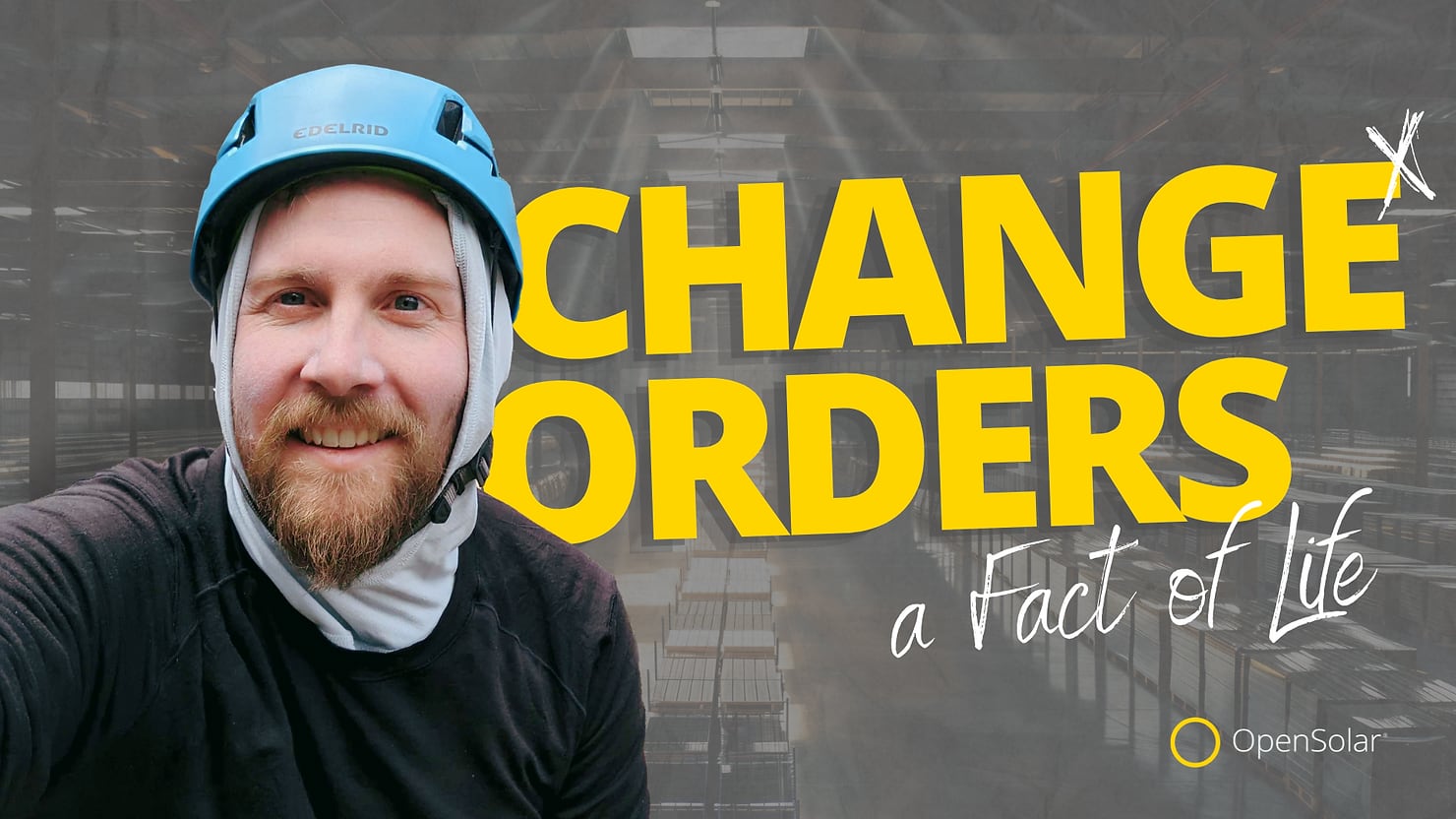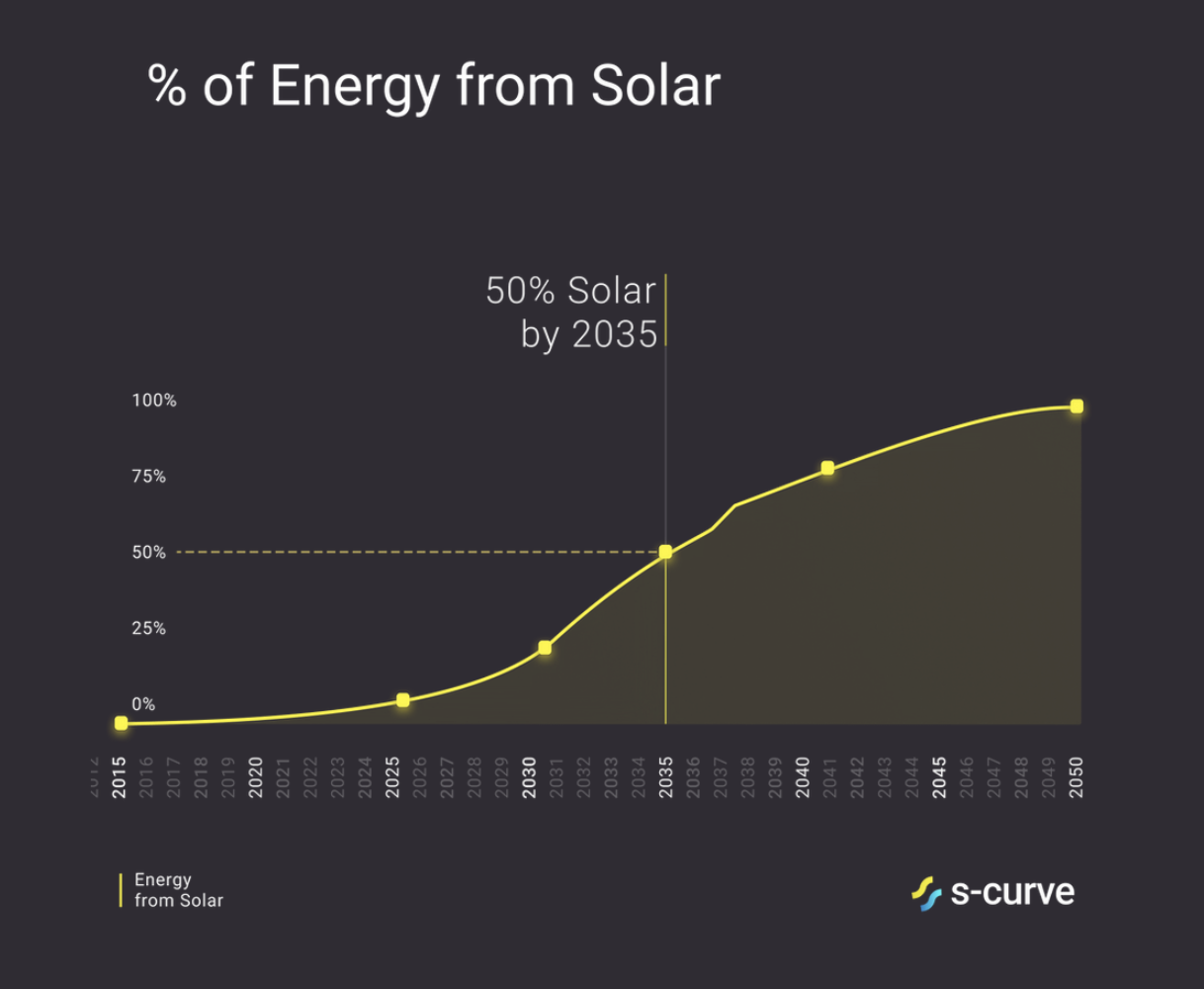Change Orders: a Fact of Life
Key takeaways:
- Reduce change orders, increase referrals
- Learn to avoid change orders wherever you can
- When you can’t avoid change orders, handle them with an easy and consistent process

If you’ve been selling solar or working in construction for a while, you know that change orders happen. Try as you might to close a squeaky clean deal every time, no matter how good you are at your job, Murphy’s Law will catch up to you eventually. Maybe you’re in the game to close a high volume of deals quickly and would rather avoid talking to your customer about things that could blow up their project costs such as the remaining lifespan of their roof. If that’s you, I urge you to take a moment to consider what’s critically important in the long term: your customer’s satisfaction.
How can you be sure your customers will give you positive reviews and send referrals your way? Proving your credibility in the sales process is number one. It’s critical that your customers don’t just feel like you’re looking out for their best interests, but that you actually DO look out for their best interests. Building structure around your sales process is the best way to assure quality. Documenting and continually improving your process will keep your referral network growing and your net effort required to close deals shrinking. You’re going to want to make an effort to turn over EVERY stone for them and help protect them against unexpected costs. After more than a decade in the fulfillment end of the solar industry, I’ve seen more change orders than I care to share, but hopefully some of my experience can help you think ahead and do better for your customers on the initial contract.
- Roofing – it couldn’t be any more important…
- How old is the roof? Has it been inspected any time in recent history?
- Removing and reinstalling a PV system can be a costly affair. The worst time to find out that you have some serious roofing issues that need to be repaired is AFTER getting a new PV system installed.
- The average removal and reinstallation clocks in around $5,000-$10,000. Pricing depends on system size, installation complexity, among other factors, but can you imagine being a happy customer after paying ~$30k for a big beautiful solar install only to find out you need to drop another $15-20k on a reroof? How much more would the cost of a reroof sting with a $5-10k removal and reinstallation adder? Yikes. No need to hard sell on roofing, but talk about establishing credibility, you can’t do much better than having an honest conversation with your customer about the age of their roof and giving them a chance to have a third party review current conditions.
- Electrical infrastructure – there’s a lot to consider…
- Is everything up to code as is? Depending on the age of the home, there may be compliance issues that were never addressed. Just because your customer had a ‘home inspection’ before they bought the place doesn’t mean that the main panel is ready for a PV/ESS installation.
- What’s the point of connection and does it meet the needs of the planned installation? Even if there’s a brand new 200A panel in place, there might be more to think about. Is there a quad or a twin breaker in EVERY space there can be? In order to land even just a couple PV circuits, your crew may need to relocate some of the existing house circuits. This is a place to really sharpen the pencil and consider the value of building out a critical loads panel. Even if your customer isn’t in the market for a battery at the moment, if moving a couple circuits is a requirement just to install PV, you may have a chance to upsell them on a little additional work in the short term that will make installing a battery easier (and cheaper) in the long term. With all the critical loads already relocated, adding a battery will go much more smoothly. Even if all the critical loads don’t end up getting moved, the price difference between a subpanel that’s just big enough for a couple PV circuits vs. a subpanel with enough capacity to accommodate critical loads is pretty negligible. Meanwhile, if you end up uninstalling a small subpanel and conduit to make room for a full sized critical loads panel, you and your customer may be looking back with regret for wasted time and materials
- System Design – What are your customers needs and how are you meeting them?
- How to correctly size a system that will fulfill the needs of your customer can be tricky, but largely it comes down to the relationship between their energy consumption, the estimated production of their PV system, and the capacity for energy storage if that’s a factor.
- Is it possible to get interval data from the utility? If so, this can help inform the clearest picture of how your customer’s historic energy consumption relates to an ideal system design.
- What’s the fee structure your customer will be subject to with their utility company? In the context of a net billing/time-of-use tariff, installed energy storage capacity can end up saving a customer a fair amount of money in the long run.
The above list might not even be half of the things you and your customer should consider. Having gone above and beyond for your customer in the initial scoping of their contract, you’ll be set up for success when you ask for a referral… or it’s time to discuss a change order!
Even if you are armed with an exhaustive checklist, and you’ve ticked all the boxes, unexpected circumstances can still pop up, and eventually it will. So let’s say you overlooked something (everybody makes mistakes), or your customer changed their mind late in the game. Even external factors can catch you off guard. Maybe in the context of a new home perhaps the general contractor has agreed to wildly change the shape of the roof without telling you. You might run into supply chain issues (too soon?), or the architect throws a last minute tantrum over the corner of one of the panels being visible over the parapet wall from the outer edge of the reflection pool. Well, guess what? It’s gotta come out of someone’s pocket. At this stage you’ve made it clear you’re operating in the best interest of your customer, and an honest conversation about unexpected costs should come and go with little to no friction.
When you find a diplomatic way to approach the conversation, regardless of how well you’ve done building rapport with your customer, nothing helps everyone sleep better at night like a well laid paper trail. Every time you and your customer agree to a change in scope, you’ll be doing yourself a favor if you get a signed (and countersigned) change order safely stored alongside your original contract. Exception management is where you’ll find the biggest efficiency gains in your business process, because exceptions tend to cause the most drag on the critical path. Having a fine tuned process for addressing changes, getting change orders signed, and moving on quickly will help you keep your customers satisfied and allow you to remain focused on closing new deals. You’ll also find that the loyalty built with your customers by following these best practices will have them thinking of you for future work and where to send their friend’s and family members when they want to go solar.
Don’t have a great process in place for handling change orders yet? If you’re using OpenSolar already, we’ve got you covered. We have a functional change order template that can be deployed in your account immediately. Do you have special requirements that our base template doesn’t capture? In this help center article, our support team explains how you can quickly and easily deploy and customize a change order document to fit your needs.
In future posts, we’ll explore other tools available in OpenSolar and best practices that can help you avoid change orders, close clean deals with the first contract, increase your average contract value, and more.
Good luck closing and keep your eye on the referral!



